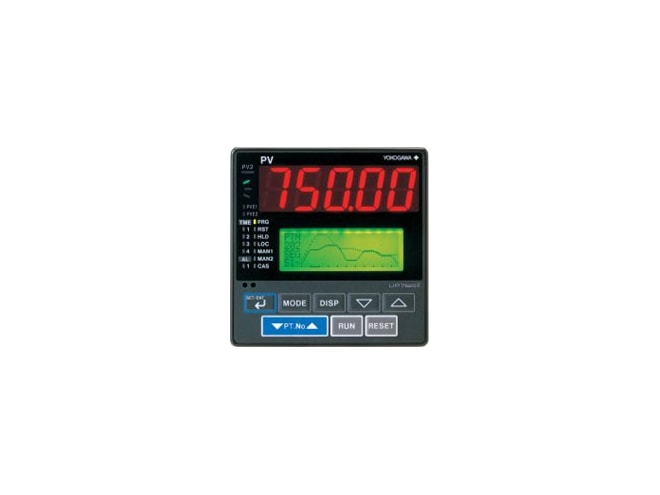The Yokogawa UP750 temperature controller is an intelligent, microprocessor-based program controller
that has the capacity of 300 program patterns as well as powerful control capability, a custom computation
function, and a user-friendly display. The Yokogawa UP750 temperature controller has many standard
control modes. Functions including program setting, control, control computation, and signal computation
can be configured by using the keys on the front panel.
The Yokogawa UP750 temperature controller includes eleven types of pre-decided control strategies including
cascade, temperature / humidity, and more in single or dual loops. Auto-tuning control, an overshoot
suppressing function "SUPER", and a heating suppressing function "SUPER 2" are standard to the Yokogawa
UP750 temperature controller.
Features of the Yokogawa UP750 Temperature Controller
- Extra-large, high resolution, 5-digit display
-
Displays the target setpoint and control related parameters, program patterns,
deviation trend records, and an analog bargraph of control output values
-
Huge capacity of 300 program patterns / 3000 segments. Applicable to a wide range
of heat treatment, textile, environmental chamber, and testing applications.
-
Features eleven types of control functions including single-loop control, cascade control,
loop control with PV auto-selector, and custom computation function, enabling the operator
to start control operation immediately after simply entering the settings.
-
Custom Computation capability, allowing functions as complicated as computation for
input compensation or sequence logic for input / output via LL200 PC-based Custom
Computation Building Tool (optional)
-
Universal input and output enable users to set or change freely the type of measured
inputs (thermocouple, RTD, or DCV), measurement input range, type of control output
(4 to 20 mA current, voltage pulse, or relay contact) etc.
-
Equipped with seven contact inputs and outputs each, which are further expandable up
to 23 inputs and outputs each by adding contact I/O signal expansion modules.
-
Various communication functions are provided. Communication is possible with personal
computer, programmable logic controller, and other controllers.

